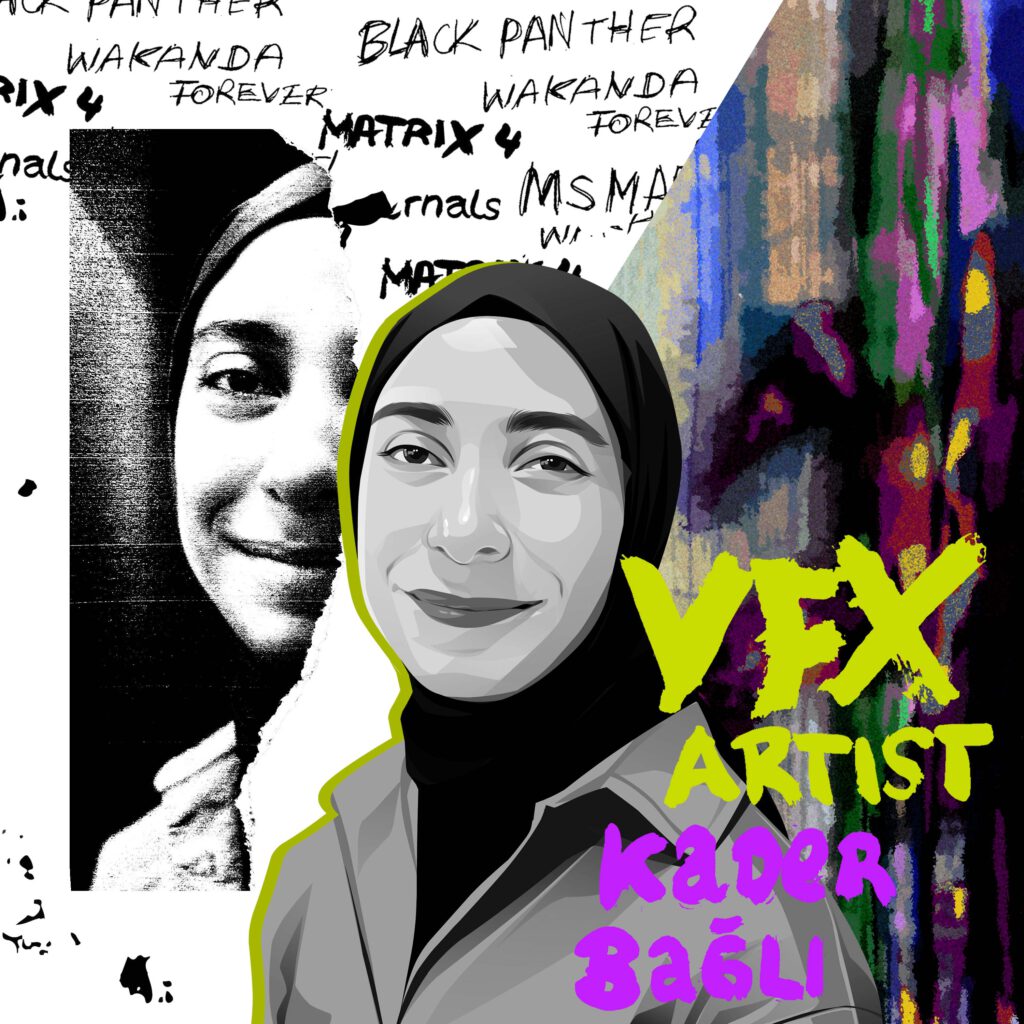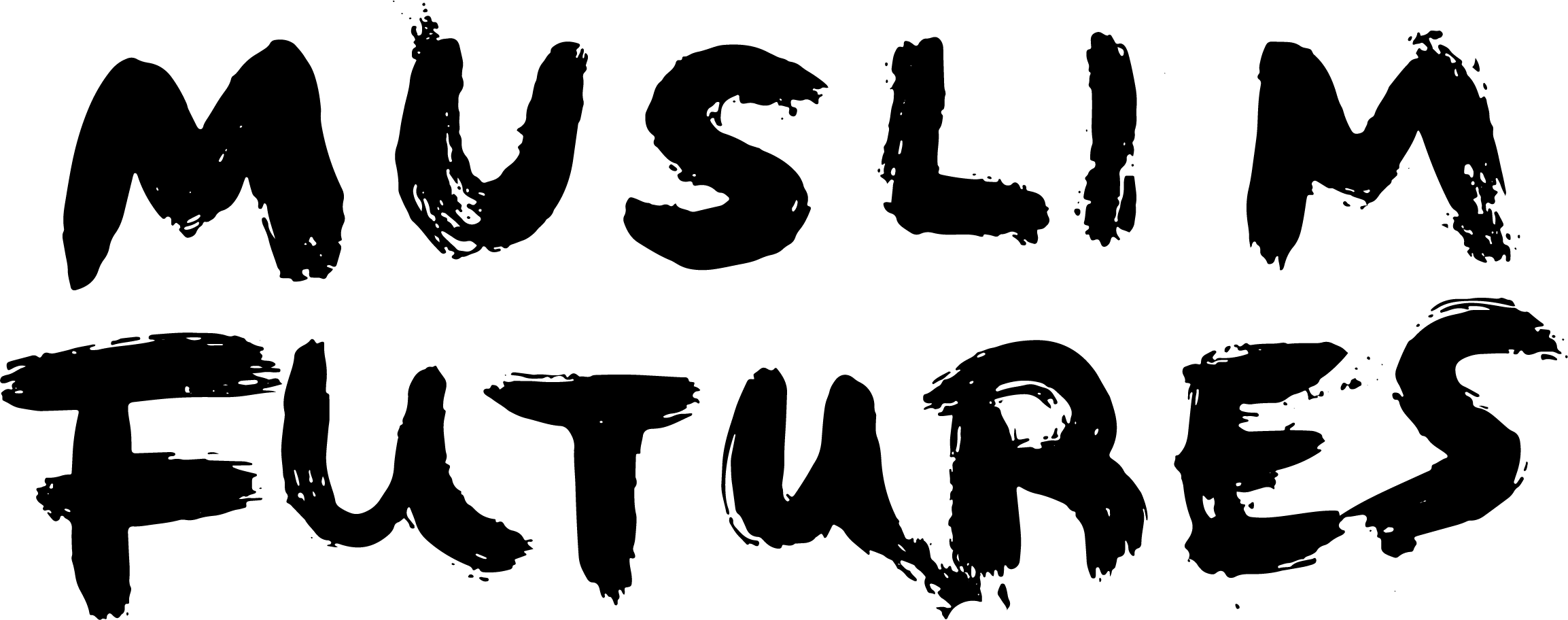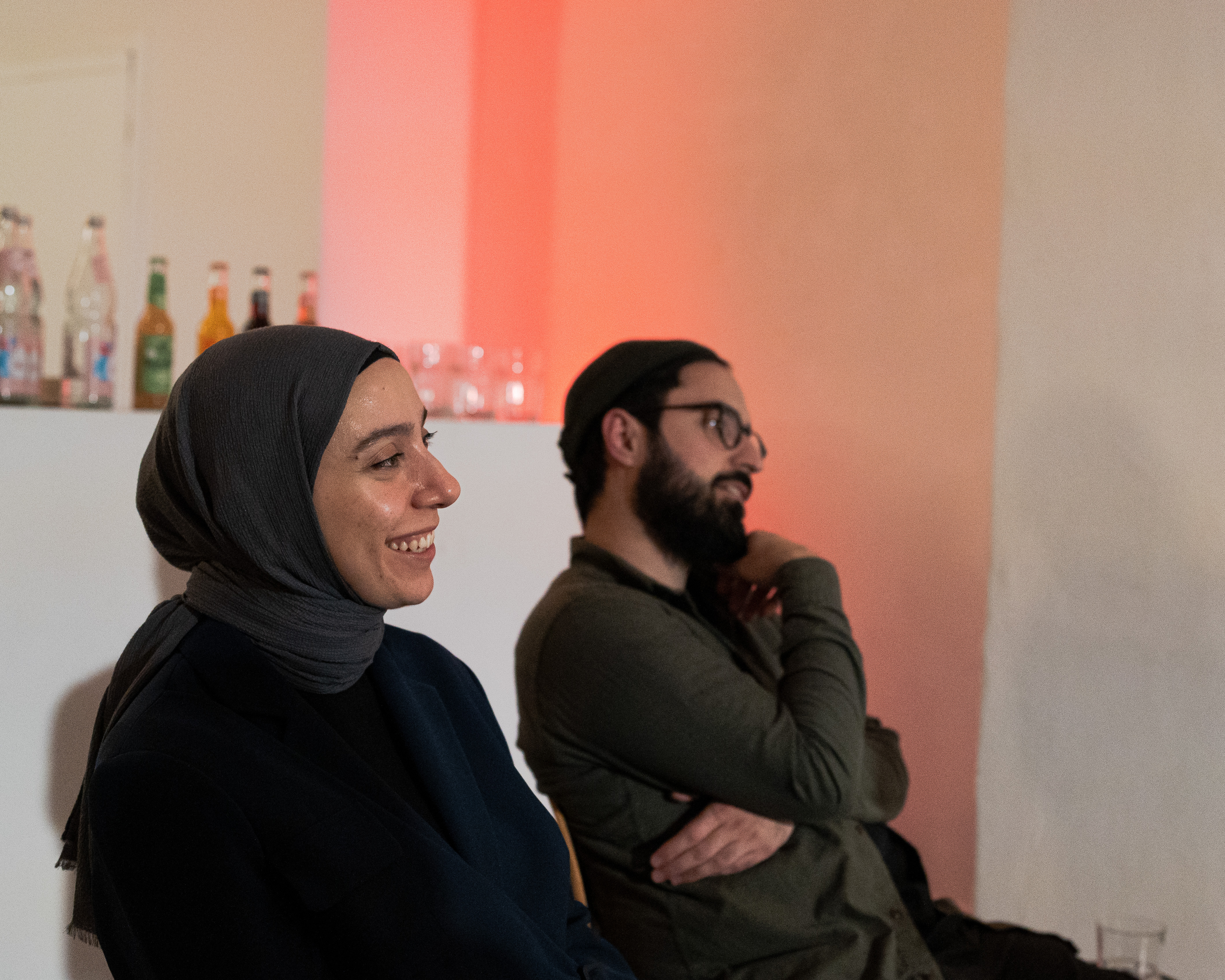„We create new dimensions with VFX. And this is precisely the tool needed for bringing our visions of Muslim Futures to our screen.“
@kaderbagli

Can you describe yourself in a few sentences?
My name is Kader Bagli; I am 26 years old, and I have worked as a lead visual effects artist for almost three years. Besides working as an artist, I also work for the Diversity, Equity, and Inclusion committee for SIGGRAPH, the world’s biggest computer graphics and interactive techniques conference.
What is your project about?
It’s basically about coming from the VFX world; being a visual effects artist is not visible in the Muslim world. And the representation is not there yet, so I really wanted to use my field of work in this project. The project is called “Invisible Dreams”. It’s a series of artificial intelligence artwork that basically showcases the possibility of portraying Muslim dreams and visions. If you’re wondering why I am using this, I asked myself why we can’t create representations and emotions for the Muslim future? Especially in the digital world, where we have most of the tools to actually create imaginations? Experiencing the project should showcase the visual imaginings of the relationship between the human and the future world. It should showcase a wide dimension of a new world, rooms and a feeling of integration, which was actually never part of our real(istic) world. I hope that with the tools, artificial intelligence and visual effects, we can create a bigger dimension in this room.
What are your associations with Muslim Futures and how do you imagine inclusive and just futures?
To be honest, this is the question that I have asked myself since the beginning of my career. It’s not just related to Muslim Futures, but it was actually a dream of mine to be part of such a project. The experience of coming from a career with no representation and Muslim futurism at all shaped my aim to always create diverse and inclusive representation. Whether on TV or in films: I associate the Muslim Futures project with the need to develop a space that centers the needs and voices of Muslims.
What should be done to create more inclusive spaces? What is the need for these spaces? How can a transfer to the „real world“ look like? So for me, it’s a space to understand and listen to wider perspectives. Not just from my field, it’s bigger than that. We have to focus on what the needs are. We must listen, process and then find ways to roll this into our world.
Muslims are significantly underrepresented in the media world. Your approach is to create more representation. What will this representation mean for Muslim Futures?
Definitely empowerment. It’s about being brave. Because when you are not represented, you don’t feel brave enough to speak up for yourself because you don’t think you are part of this world. You are not part of the visual interpretation of directors of all these people. So you are not brave enough to speak up for yourself. And we see this pattern that we are shy sometimes and not feeling confident enough to stand up for ourselves. And if this representation is there, we feel a more powerful feeling highlighting the fact that we are part of this world. But there’s so much more to this demotion of feelings that we have. And especially when it comes to thoughts and pressures of having to be: „perfect to be represented, we have to be perfect to be part of that system – we should be working hard for it“. No – because with this kind of representation, we don’t question enough. To be honest, we need to have higher self-esteem; we see the lack of it everywhere. And I hope that with this representation, we can create a braver community – this is what we need. We don’t need perfection to be represented. And that’s what matters.
Because with Ms Marvel, for example, we saw this significant impact of influence not only in the Muslim world but also everywhere. We noticed that something was happening and possible. It was a huge impact, showing positive vibes and proving we could live together. Without separating two worlds, it’s not just the Muslim world and the other worlds. Actually, we are sharing one world, a world that shouldn’t be so strict and complicated to live in. We have examples of diverse mixtures of cultures and religions coming together, which should be considered the norm. But with time passing, we have let an idea take the shape of being unable to live together. So we should just return back to the idea of a shared world. And with this kind of representation, we can aim for it to roll it back again.
Why is a Muslim perspective on AI and VFX important for an inclusive and just future?
We don’t see the effects of visual effects. The work that we do in VFX is everything that makes the impossible happen. It’s not just a fire effect. We create worlds in the background; we create new dimensions with VFX. And this is precisely the tool needed for bringing our visions of Muslim Futures to our screen. Imagining dimensions that can’t be filmed in real life is the key. We need visual effects and artists with minds to enhance and widen perspectives. AI is the tool to speed up that process technically and to find inspiration. We always say that „we don’t have to think in the box, “ and if we need to think out of the box, we need artists with the tools to widen this. And that’s why I feel very responsible for sharing whatever is inside me and whatever I also learn in this career and path of visual effects work.
What inspires you? What makes you dream and motivates you?
The first thing that inspired me while starting this career was bringing the vision to the screen. As a student, I realized I was the only one with this kind of profile, being Muslim. However, I still need to find out if I am the only hijabi working in VFX in Germany.
Having this motivation to open up the path for someone else, this kind of responsibility drives me to do something creative that can change the screen picture. You have this idea of a before and after and think something is happening in the industry. This was my first motivation to be there. But at the same time, when I realized nothing was going on, I was thinking about finding ways to include myself respectfully and powerfully so I could move on. And with moving on, finding ways, and finding people that actually support who I am. And finding ways to bring all of it to the screen. It’s not about me; it’s about the general picture. Therefore my biggest inspiration is not a person itself but it’s where I’m from and my religion. This wider perspective of including everyone followed me through my childhood. I always wanted us to express our feelings and minds on screen, on something. It didn’t have to be the screen because we weren’t given a chance then. And when I think about our parents and grandparents, they could never express their feelings and dreams at all. They were never asked to do so. So being in the field, they were my inspiration. I feel this responsibility, and now also living in this digital world, where we have all the tools we need to bring our narratives back in, I can keep moving on. And that’s why this is my biggest motivation to learn more about ways to combine things daily, and it’s not just one technique you could use. My work around artificial intelligence happens outside of my workplace. I’m playing around with it, seeing where it is going. And going with the world and not going 50 years back, which people might expect from us. To be there and say: I am up to date and using the techniques we need for it.
Could you describe your project with three emojis?
😶✨🤯
You want to learn more about Kader and our other futurists? Check out our Instagram page @superrrnetwork to be updated.

